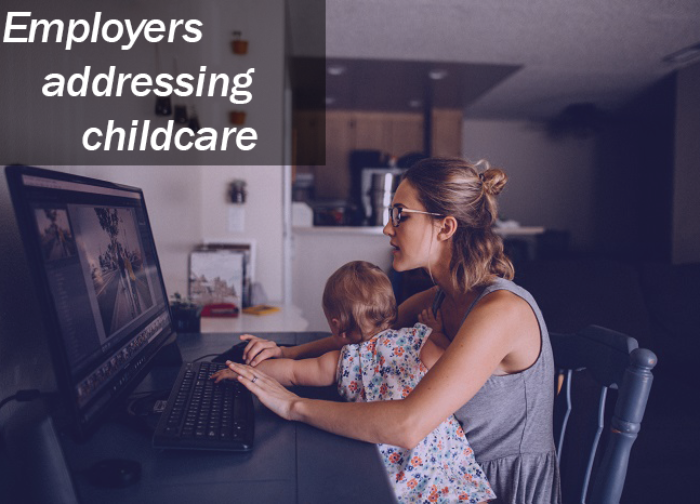Caregiving was already a significant challenge for employees: Approximately 41.8 million Americans are struggling to cope with the emotional, physical and financial challenges posed by caring for their aging loved ones, according to a study from the National Alliance for Caregiving and AARP. Meanwhile, 61% of working caregivers say helping loved ones has impacted their employment situation, and 53% report going in late, leaving early, or taking time off to accommodate care. Six percent of caregivers give up working entirely, and another 5% retire early.
And the COVID-19 pandemic is only exacerbating those issues. The closure of schools, daycares and summer camps is making balancing home and work life especially difficult for working parents. Meanwhile, employees caring for elderly relatives or others are facing access challenges as well.

“COVID-19 has made a difficult situation worse,” says Larry Nisenson, senior vice president and chief commercial officer for insurance firm Genworth.
Recent data from Genworth found that 18% of respondents unexpectedly had to spend more time providing assistance to a loved one who is either older or in a vulnerable health category in the midst of coronavirus. The average time investment is an onerous nine hours per week.
“Mitigating these caregiving responsibilities will likely become all the more important as Americans remain fearful of assisted living facilities, which have become known as a coronavirus hotspot,” he says.
HRE spoke with Nisenson about the caregiving crisis, the effects of the pandemic on caregivers, and what employers should do.
HRE: Caregiving was already a problem facing many employees before COVID. How much is COVID exacerbating this problem?
Nisenson: According to Genworth’s Caregiving in COVID-19: Consumer Sentiment Study, one in three Americans became caregivers overnight. These new caregivers were providing for their children or older family members, and 53% of them felt more stress. We expect elevated stress levels to linger as caregivers continue to balance employment and additional caregiving responsibilities.
HRE: Caregiving attention has been a hot workplace topic in recent years. Why is it the onus of employers to help these employees?
Nisenson: Employers should take the lead on caregiving assistance for several reasons. For one, many employees are hesitant to initiate conversations pertaining to caregiving with employers. And, according to a Family Caregiver Alliance publication, the cost of lost productivity in the U.S. exceeded $25 billion [because of employees’ caregiving responsibilities], and the increased healthcare costs to companies were over $13 billion. This increased healthcare cost was impacted by caregiver stress and the associated health consequences.
Beyond the financial aspect, other [reasons for employers to help] include enhanced recruiting and retention via benefit enhancements and a more positive, productive working environment since the peace of mind can make employees more engaged at work.
HRE: What exactly can and should employers and HR leaders do to help?
Nisenson: First, it’s important to note the special circumstances that caring for an aging loved one often bring about–scenarios that don’t fall into a neat, one-size-fits-all column. That said, employers are well-served to try to get a better understanding of everyone’s individual situations. You don’t know what you don’t know until you ask.
Flexibility also is important. With the added workloads some may be experiencing juggling caregiving duties and work responsibilities, offering flexible scheduling options–like flexible work hours and work-from-home–can help your employees balance their responsibilities. Building in extra time for important projects–including clear expectations concerning deadlines, team communication and client support–also can be helpful, as it makes sure team members are on the same page even if they’re not in the same working space.
HRE: And benefits?
Nisenson: It’s a good time to take a hard look at existing policies and employer benefits surrounding caregiving, which is one part of a larger question that, in the wake of this unprecedented health and economic crisis, all employers should ask themselves: Are you adequately accommodating your employees’ needs during this new normal?
HRE: Overall, how do you think COVID will change caregiving efforts and caregiving benefits in the short and long-term?
Nisenson: According to the Genworth study, four out of 10 adults are now more willing to prioritize saving for the future, and four out of five adults have already or recently taken action to increase their level of financial preparedness. We believe this shift in priorities will lead consumers to look for increased ways to fund their care needs. Employers now have the tools to help their employees along this journey by adding caregiving support services to their benefits offerings.



